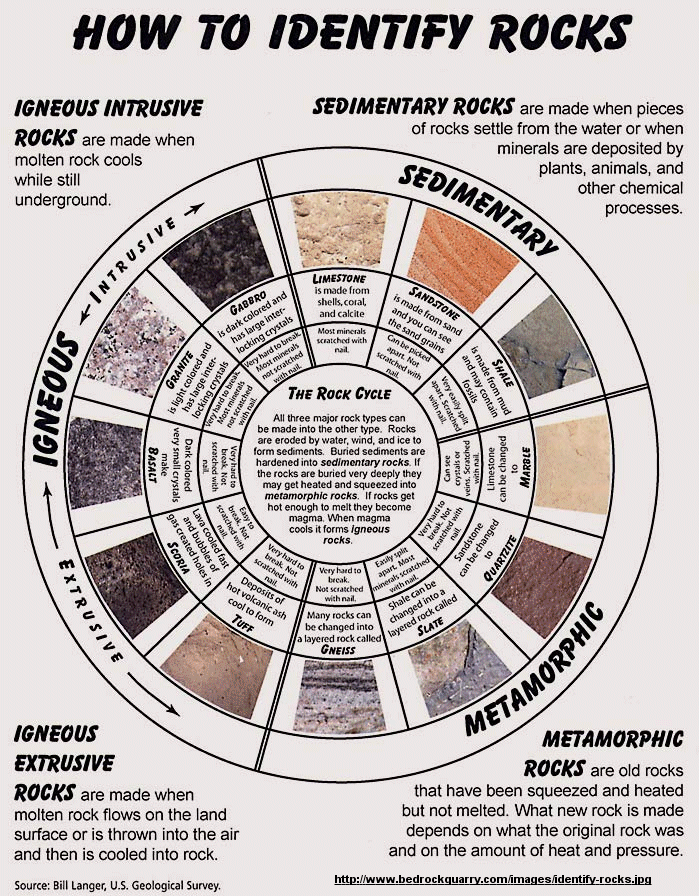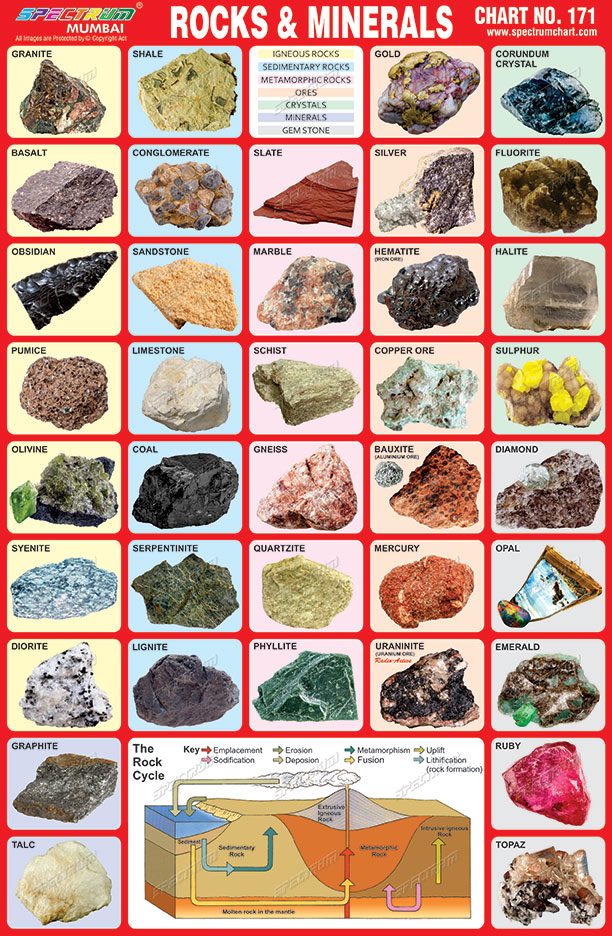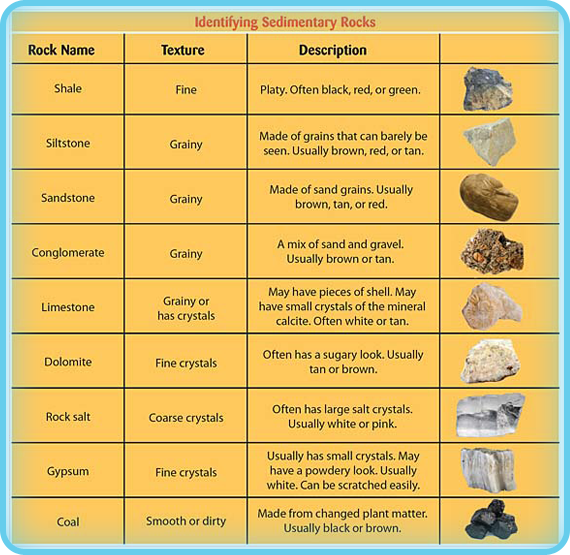Web the first step to identify a rock is to try to categorize the rock into one of the three main types or groups of rocks. Web flow charts or, dichotomous keys, are a great tool for identifying rocks and minerals when you are learning about the different sample properties. The only rocks which do not fall into one of these categories are meteorites. By comparing your rock sample with photographic examples, you can identify key characteristics such as how the rock was formed, what minerals and other. Web to identify your rock, first take note of its physical properties like color, luster, banding, layering, and grain size.
Web here's how to identify 44 of the most common igneous, sedimentary, and metamorphic rock types with a handy rock identification chart. Web in geology, pictures of rocks can be used to help you best determine which of the three major types a particular rock belongs to: It came with over 150 pieces and 30 different types of ricks and minerals to identify. Identity, refer to the mineral key or the rock classification charts. Web to identify a sedimentary rock, first determine if it is clastic, organic, or chemical.
You will get the best results by taking your rock or mineral to a local source where it can be handled and examined closely. It is our hope that the samples and information will be of use to you in your classroom explorations into the world of earth materials and mining. Practical advice you can follow. Rocks and minerals must be examined in person from all perspectives for accurate identification; Web to identify a mineral, first observe its physical characteristics like hardness, color, streak, luster, cleavage, and specific gravity.
Identity, refer to the mineral key or the rock classification charts. But there are certain things you can do to help identify your rock. Each rock has its own set of unique characteristics, much like a fingerprint. Web in this section, you will view a short video of each rock, and then, based on the characteristics you can observe, you will identify the rock by its proper name. You’ll never feel lost and you’ll always have a clear path towards your goal. Created by teach beside me. These include igneous, sedimentary or metamorphic types. By comparing your rock sample with photographic examples, you can identify key characteristics such as how the rock was formed, what minerals and other. Complete with photos and information about each rock’s distinguishing characteristics, this rock identification guide has been designed to assist you in identifying the rocks provided in the deeper and deeper and mining matters ii kits. Web simply click on a rock in the rock chart to learn all about it. Rock fizzes when acid is poured on and may contain fossils. The chart can also provide you with valuable information about the composition, origin, and potential uses of the rocks and minerals you find. The only rocks which do not fall into one of these categories are meteorites. If it is clastic, examine the sizes and shapes of the fragments to determine the rock type. Web in geology, pictures of rocks can be used to help you best determine which of the three major types a particular rock belongs to:
The Only Rocks Which Do Not Fall Into One Of These Categories Are Meteorites.
Write these traits down, then compare the mineral’s traits to those of known mineral types. Color can be an initial clue; Rock fizzes when acid is poured on and may contain fossils. By comparing your rock sample with photographic examples, you can identify key characteristics such as how the rock was formed, what minerals and other.
The Rock Is Sedimentary (Siltstone, Sandstone Or Conglomerate).
Use this chart and the accompanying cards to learn the three types of rocks: Learn bout igneous rocks such as obsidian, basalt, granite, pumice, rhyolite, and andecite; And sedimentary rocks such as sandstone, limestone, conglomerate, shale, travertine, and dolomite. It is our hope that the samples and information will be of use to you in your classroom explorations into the world of earth materials and mining.
Then, Perform Basic Tests On The Rock Observing Its Color, Hardness, Fracture Tendency, And Acid Reaction.
Practical advice you can follow. Web i have a fun rocks and minerals collection kit that i found on amazon to help my kids learn even more about rocks. Web to identify a sedimentary rock, first determine if it is clastic, organic, or chemical. Can you identify my rock or mineral?
But There Are Certain Things You Can Do To Help Identify Your Rock.
Web the first step to identify a rock is to try to categorize the rock into one of the three main types or groups of rocks. If it is organic or chemical, determine the rock’s composition and look for unique characteristics to arrive at an identification. Web how to identify rocks and minerals by jan c. These charts include many rocks and minerals and will help you identify the samples in your mini me geology kits and those commonly found in nature.









